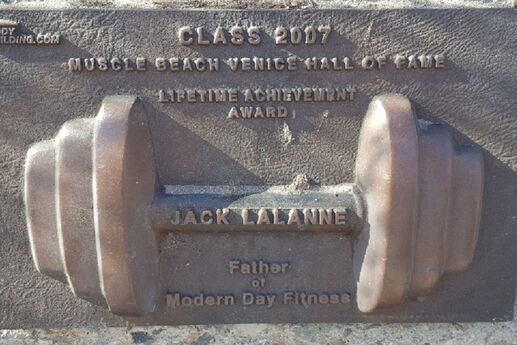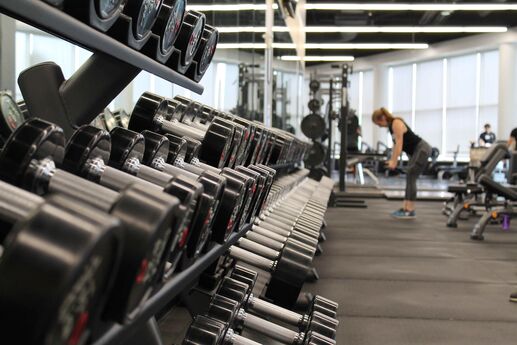What Comes First: Build Muscle or Shed Fat?
You want to get rid of the flab. You also want to put on muscle. But you know that you can’t optimally (or even remotely) do both at the same time. So what plan should you embark on first?
The answer depends entirely on 1) your honest assessment of what you look like now, and 2) what you hope to look like in the not-too-distant future. Says Mike Wunsch, a certified strength and conditioning specialist and the director of fitness at Results Fitness in Santa Clarita, Calif.: “Every guy wants abs and arms” -- meaning cut abs and big arms. But, he adds, that’s like wanting to look like the chiseled bodybuilder … on the day of competition. “Ronnie Coleman doesn’t look like that 99 percent of the time,” he explains. “He’s usually 30 pounds heavier, having built up a ton of muscle before he goes into his cutting phase and then dehydrating just before the contest.”
Determine Your Goal
What you want to do is develop a sustainable physique that you can live with day in and day out. Take a look at yourself in the mirror: Do you have a decent amount of muscle but too much fat? Or are you pretty defined but lack any real muscle?
Once you’ve determined your goal, the next step is to embark on a fitness-and-nutrition plan that will change your shape accordingly. “If you have respectable strength, go right into a cutting program,” says Wunsch. “If you’ve got a six-pack but want to get bigger, you’re going to have to put on some fat along with that new muscle.” He gives an example of a 6-foot guy who’s a ripped 160, but who would rather be a ripped 190. To get there, he’s going to have to be a softer-looking 200 first.
First, Eat Right
If your goal is to get lean, says Michael J. Sokol, a personal trainer recognized by the American Council on Exercise and owner of One-on-One Fitness in Chicago and Scottsdale, Ariz., you should consume six smaller balanced meals/snacks every two to three hours per day. Each one should contain protein (eggs, nuts, lean meat, fish, tuna, cottage cheese), quality, low-glycemic carbohydrates (wheat-berry bread, sweet potatoes, wheat pasta, fruit, brown/wild rice, steel-cut oats), dark veggies and plenty of water.
If your goal is to pack on the muscle, Wunsch advises getting at least 1 gram of protein per pound of body weight. Those six meals per day must be sizable, and one should include a post-workout whey protein recovery shake. While you don’t need to eat as “clean” (lower in fat, no junk) as those trying to get lean, you should still aim for nutrient-dense calories (e.g., a free-range, grass-fed hamburger with a whole baked potato, rather than a Whopper with fries). Just don’t skip those workouts -- with all that food, your body will be generating both muscle and fat, and intense workouts will ensure that much of it is the hard stuff.
Now: Build Strength or Burn Fat
Strength-building is all about hoisting heavy weights approximately three workouts a week. A good approach is to do a push day (chest, shoulder and triceps), a pull day (back and biceps) and a leg day. Emphasize major compound moves (involving more than one muscle group), such as bench presses, incline presses, military presses and triceps presses on push days; pull-ups, deadlifts, back rows and straight bar curls on pull days; and squats, lunges and calf presses on leg days. Keep your reps below 10 per exercise, and rest 2 to 3 minutes between sets.
Meanwhile, says Wunsch, do zero cardio. “Aerobic conditioning has a negative influence on muscle gain,” he says. “You don’t want to tax the lean body mass that you’re trying to add.”
Wunsch’s fat-burning program is actually not that different, but everything is done at a quicker pace and with a higher rep range. While you’ll still do three workouts a week, the breakdown will be chest/back, shoulders/arms, and legs, which more freely allows you to superset exercises. For example, if you’re doing three supersets of push-ups/deadlifts, you’ll do the two exercises back-to-back (one superset) and rest 45 seconds between each superset. Aim to get at least 15 reps per exercise, per superset.
So, what about the cardio? Surprisingly, Wunsch doesn’t advocate standard cardio for fat loss either. “Running or biking is not what works best,” he says. “Look at the research.” Instead, you need to activate as many muscle fibers as possible with strength training to create a metabolic effect, and when you do any kind of fast movement, it should be done as equally timed intervals, such as sprints or heavy rope-jumping -- 20 seconds on, 20 seconds off -- for 10 to 20 minutes only.
Finally, whichever program you’re on, make sure to include some core conditioning. “Remember, your core is not for your six-pack,” says Wunsch. “It’s for resisting movement in your low spine and transferring energy from your upper body to your lower, and vice versa.” In other words, ditch the isolated crunches and go for total core moves, like ball roll-outs and planks.
Ronnie Coleman Photo by www.localfitness.com.au






